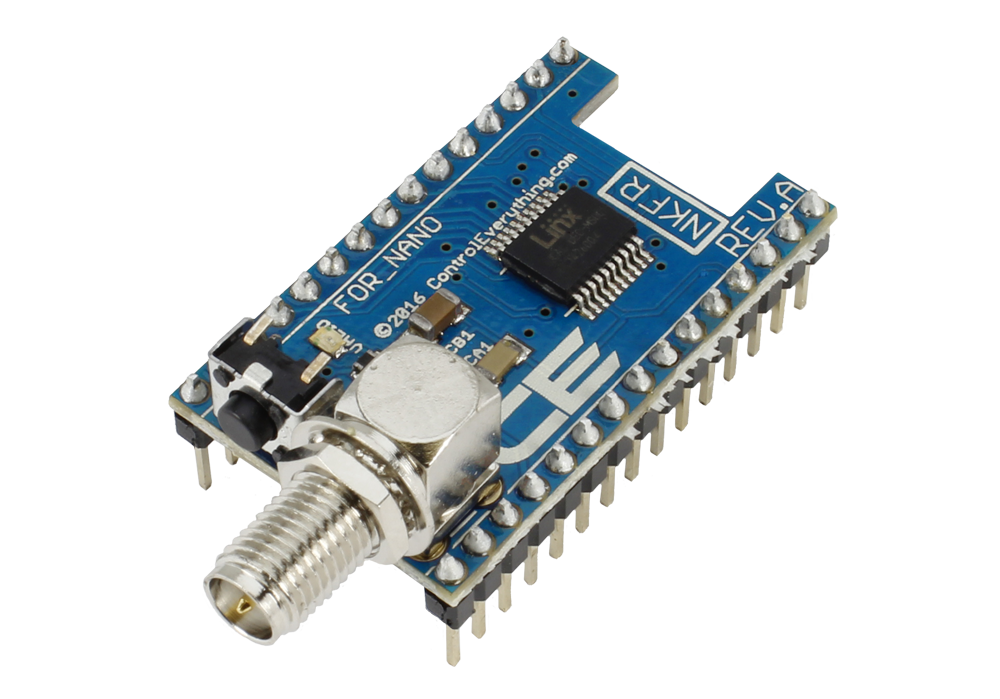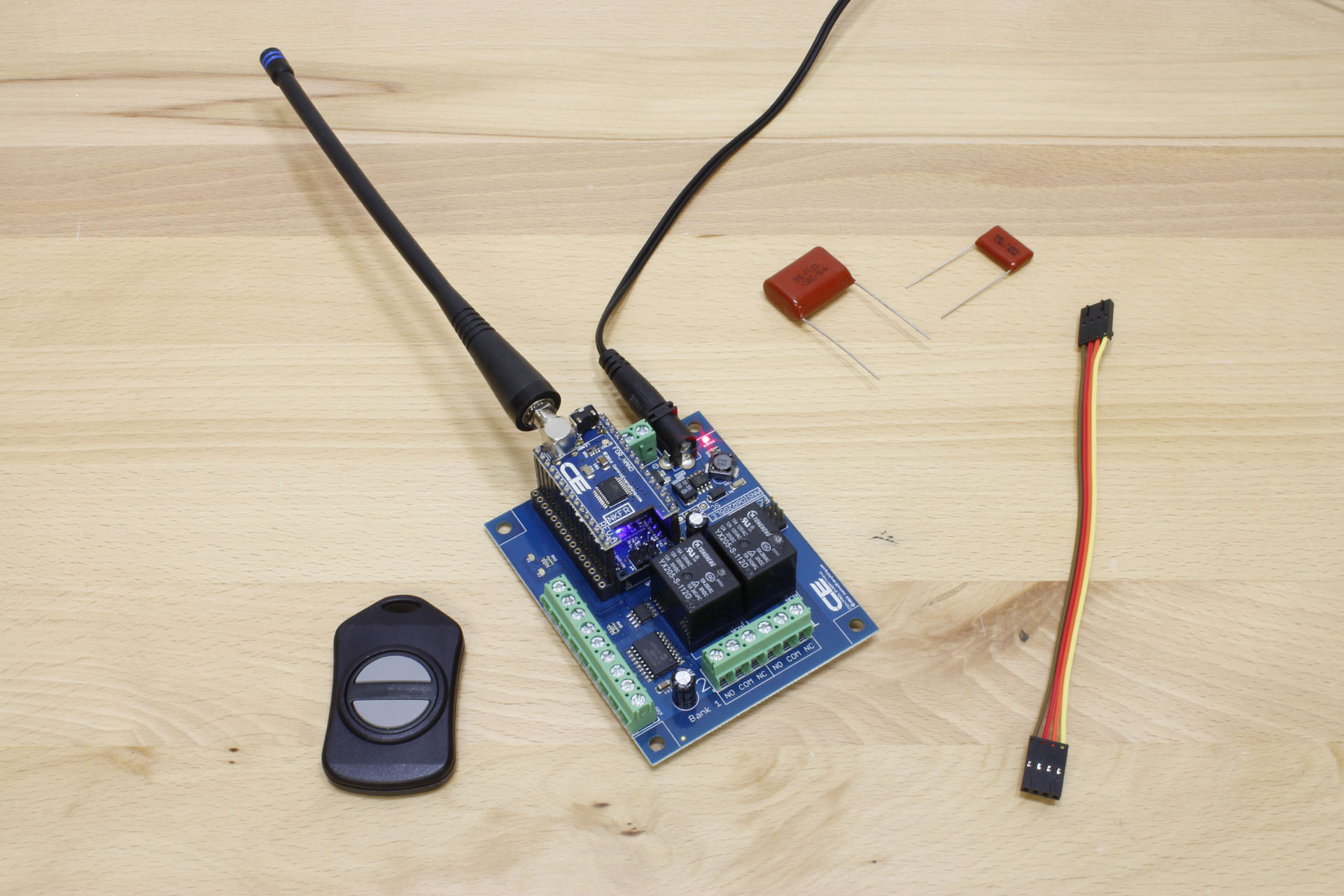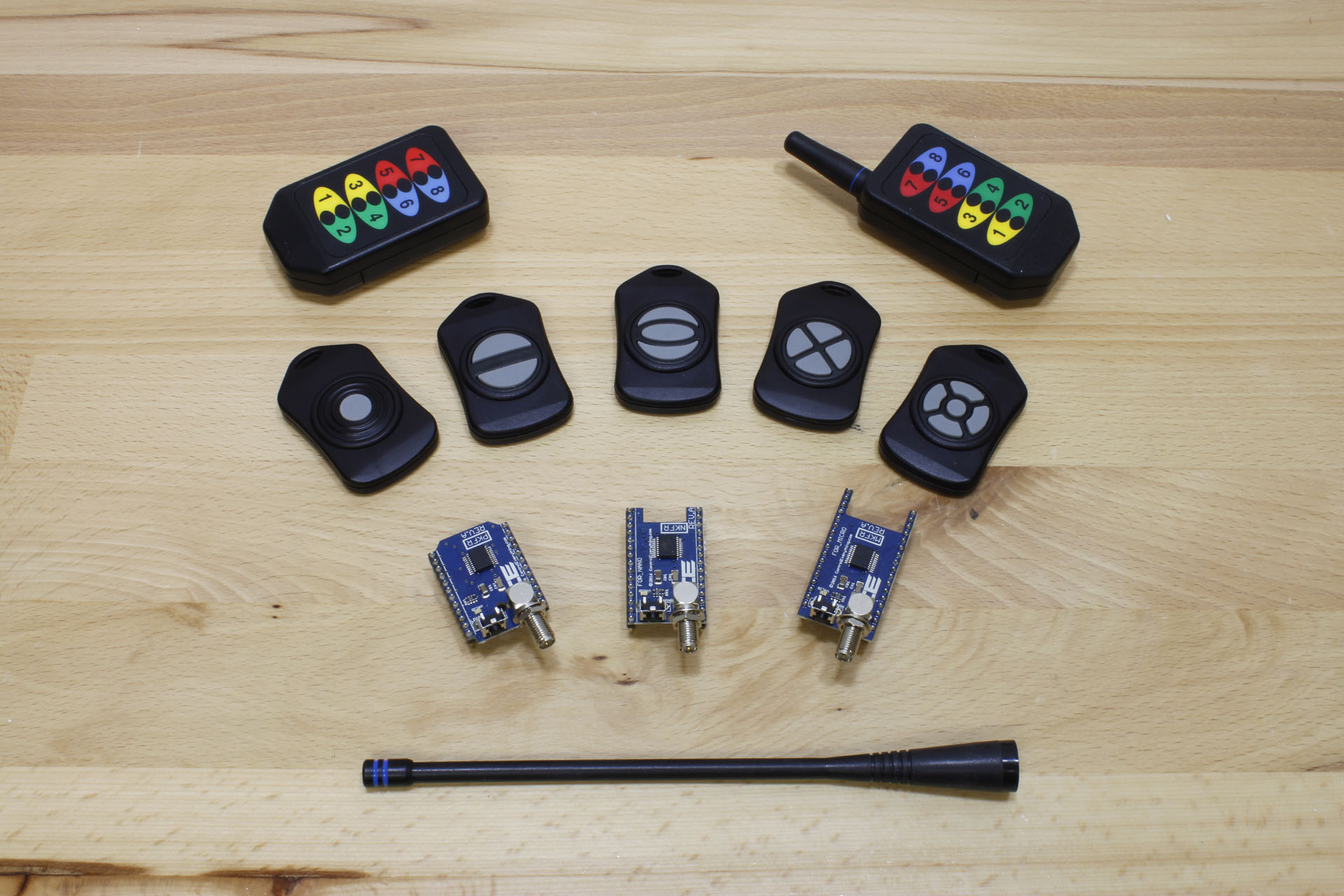Key Fob Receiver Overlay Shield for Arduino Nano
Highlights
- Adds Key Fob Receiver as an Overlay Shield
- 1, 2, 3, 4, 5, 8-Button Remote Control Compatible
- Pairing Button with Valid Receive LED
- Up to 750 Foot Range with 8-Button Key Fob
- 418/433 MHz Operation with Integrated LICAL Decoder
- Designed for Arduino Nano
The NKFR is a Key Fob Receiver/Decoder shield compatible with Linx Technologies MS Series Key Fob Transmitters operating at 418/433MHz (1, 2, 3, 4, 5, 8-Button Transmitters Available Separately). This device is capable of receiving button presses from a remote control up to 750 feet away (when using the 8-Button remote). When a remote control button is pressed, the on-board Valid LED illuminates. In addition, Arduino Nano I/O lines are asserted High for the duration of the remote button press. Arduino Nano I/O lines return to a low state when the remote control button is released. Includes RP-SMA Antenna.
The On-Board LICAL Key Fob Decoder is Mapped to the following Arduino Nano Pins:
Key Fob Button 0 is Connected to Arduino Nano D4
Key Fob Button 1 is Connected to Arduino Nano D5
Key Fob Button 2 is Connected to Arduino Nano D6
Key Fob Button 3 is Connected to Arduino Nano D7
Key Fob Button 4 is Connected to Arduino Nano D8
Key Fob Button 5 is Connected to Arduino Nano D9
Key Fob Button 6 is Connected to Arduino Nano D10
Key Fob Button 7 is Connected to Arduino Nano D11
Key Fob Signal Strength RSSI is Connected to Arduino Nano A0
Key Fob Transmitter ID is Connected to the Arduino Nano RX0
NOTE: Key Fob remotes are security encrypted, and must be paired with the controller prior to use. This is an Overlay Shield and does NOT directly plug into the Arduino Nano. This Overlay Shield REQUIRES a NCD controller with Double-Row (or larger) Headers on Each Side of the Arduino Nano module interface. To use an overlay shield, Arduino Nano is plugged into a NCD controller, which has two (or three) rows of pins on each side of the Arduino Nano module. This shield installs over the top of the Arduino Nano, using the outer set of pins of the NCD controller to make contact with the Arduino Nano module. Please examine photos carefully to see how overlay shields are installed.
Mechanical Drawing
Wiring Diagrams
Datasheets
Out of stock



